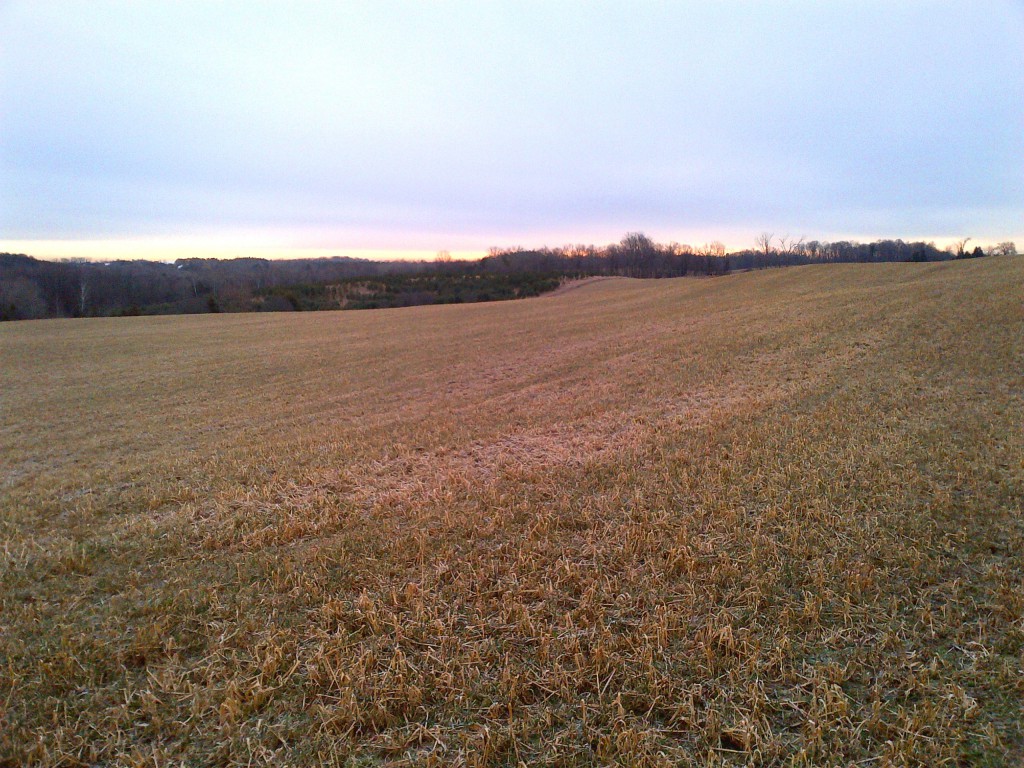
photo taken by Nadine Abrams
“There’s an appetite for soil management practices that promote soil health,” said Dr. Craig Drury, Soil Management & Biochemistry, Agriculture and Agri-Food Canada.
A noteworthy program in the Region of Peel is looking to help satiate that appetite by working with farmers across the region.
No one quite understands the importance and implications of soil health like a farmer: healthy soil provides the foundation for healthy crop growth. And more than that, when managed sustainably, soils also have the power to play an important role in climate change mitigation by storing carbon and decreasing GHG emissions (FAO 2015).
Farmers undertake a number of practices to nourish their land, water and soil, and the Peel Rural Water Quality Program (PRWQP) is supporting farmers with these efforts. Among other initiatives, the program has helped to amplify the role cover crops can play in improving soil health and water quality.
Cover crops can play an important role for a number of reasons. Agriculture and Agri-Food Canada (AAFC) explain on their website that cover crops can help resolve a host of soil health and environmental concerns, especially nutrient retention. Ultimately, cover crops help build organic matter content – a key element to healthy soil — thus improving soil structure and the soil’s ability to keep nutrients on the farm. And the implications are much more far-reaching than the individual’s farm. Research has also been exploring how cover crops could mitigate climate change and increase carbon sequestration.
“Cover crops are an amazing tool that producers have available to them,” says Dr. Craig Drury on this AAFC webpage. “The cover crop increases soil organic carbon, improves soil structure and overall soil quality, and can also improve the drainage of soil.”
With this understanding, the PRWQP is offering grants to eligible farmers to grow cover crops, which is reducing soil erosion, assisting with the management of soil fertility, controlling disease and pests, and protecting groundwater by promoting nutrient retention.
A five-year field study from Agriculture and Agri-Food Canada determined that cover crops improved soil health not only by absorbing nutrients from the soil but also by reducing the amount of fertilizer nutrients leaching through the soil and out of the root zone.
“The cover crops act very much like a sponge,” explains Drury, adding they are “very beneficial from a water quality standpoint” because they help reduce surface runoff while retaining nutrients from the soil.
Initiatives like the PRWQP that provide this sort of sustainable support are poised to help build a foundation for healthier, more resilient environments. A survey done by the Conservation Technology Information Center in 2010 found the main reason respondents do not use cover crops is limited time and money. And while 73% of the 809 respondents had never tried using cover crops, all indicated that they were willing or somewhat willing to try. This willingness echoed by Peel Region farmers is what brought the incorporation of cover crops to the PRWQ Program.
“I’ve been thinking about incorporating cover crops for a while now,” said Gary Mountain, Peel Farmer and Vice President of the Peel Soil and Crop Improvement Association. “The grant gave me the opportunity to experiment with cover crops and I am really happy with the catch and growth I got out of my red clover cover crop last year.”
The program, a partnership between the Region of Peel, Credit Valley Conservation and the Toronto and Region Conservation Authority, provides a one-time cost-share grant for cover crops of $100 per acre up to 50 acres per eligible farm business.
The Peel Rural Water Quality Program is a voluntary, confidential program that promotes and supports the implementation of agricultural environmental Best Management Practice (BMP) projects on farm properties in Peel Region. The program provides technical assistance and grants to help farm owners make environmental improvements on their properties.
Read our previous blog post on the PRWQP where we talked with Don Carruthers of Stone Ridge Farm, who shared his participation in the program and their efforts to protect the Credit River Watershed.
For more information on the technical assistance and financial incentives offered through the PRWQP or for eligibility criteria, please contact CVC at 905-670-1615 ext. 430 or TRCA at 416-661-6600 ext. 5349. You can also visit: www.peelregion.ca/planning/paawg/prwqp.htm.
If you’re interested but live outside of Peel, contact your local Conservation Authority as they may be able to provide funding and technical assistance for cover crops or other environmental improvement projects.
Information regarding the PRWQP, and information from participating Peel Region farmers, come from a story written by Nadine Abrams, TRCA, and Mark Eastman, Credit Valley Conservation, for the Golden Horseshoe Soil and Crop Improvement Association 2016 Summer Newsletter.
